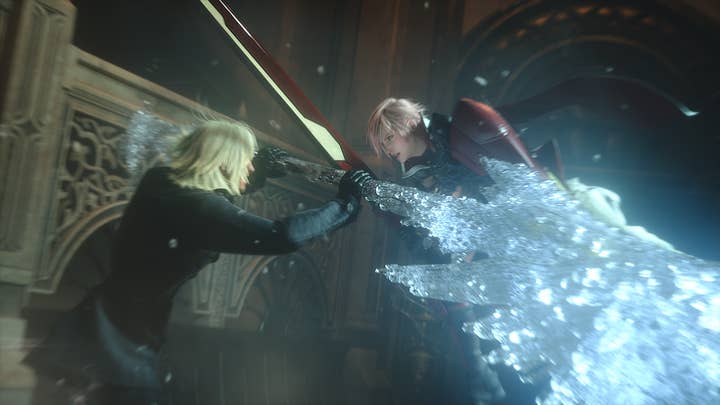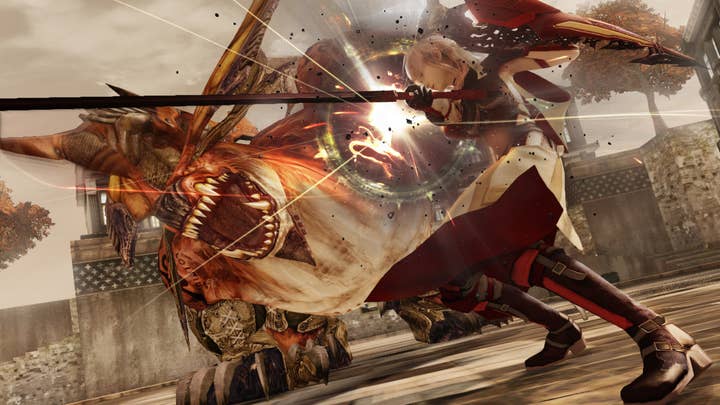Lightning Returns: Final Fantasy XIII's combat system | Why I Love
Worldless game director Joel Roset breaks down ingenious design in an oft-overlooked installment of the RPG franchise
Why I Love is a series of guest editorials on GamesIndustry.biz intended to showcase the ways in which game developers appreciate each other's work. This entry was contributed by Joel Roset, Game Director at developer Noname Studios, whose genre-bending 2D adventure platformer, Worldless published by Thunderful and Coatsink is coming to Xbox, PC, Nintendo Switch and PC on November 21.
When people think of the Final Fantasy series they generally don't think about Lightning Returns: Final Fantasy XIII.
The original Final Fantasy XIII was often considered an overly linear disappointment that lacked the exploration and towns that made previous entries in the series such beloved epics. So the idea of two additional sequels – Final Fantasy XIII-2 was the first follow-up – wasn't on many's wish list. Yet this oft overlooked third entry, Lightning Returns: Final Fantasy XIII, really stuck with me for one important reason: its combat system.
Lightning Returns' combat system had everything you'd want from an RPG. Its stamina system meant you needed to juggle fast-paced resource management, there was a huge emphasis on planning a strategy and customizing your character, and its enemy weakness Stagger System ensured all abilities could be useful at any point of the game. Allow me to break this down:
In most RPGs it's common that many early actions become basically useless once new upgrades or new skills come to play. Lightning Returns solves this with its Stagger System. Here, some abilities work better to fulfill those stagger requirements, allowing you to freeze an enemy in place and wallop them with massive damage. In essence, you could chip away at your foes dealing damage all throughout, or you could focus on staggering them and dealing more damage later. It took planning, thought and strategy to come out victorious.

This kind of system, where there are multiphase goals in an encounter, is currently a great trend in most modern combat-focused games. It gives a lot of value to a multitude of skills, offers more interesting design choices to developers, and it makes combat not rely solely on a damage-per-second (DPS) mindset.
In Lightning Returns, you generally want to first focus on building up stagger damage, then, once the enemy is stunned, you should focus on DPS for the limited stagger window. That's the basic gist anyway, but balancing using the right skills to stagger a foe, while also reacting to enemy attacks, is no easy task!
This is given further depth through an interesting sub-mechanic to reward non-mashing: if you chain any action together with proper input timing (when the action hits or a spell is cast), you deal extra damage. This adds a layer of real-time tension. Mastering the timing of these reflex-driven boosts isn't mandatory, but it massively increases your chances of success, keeps the action engaging and allows the player to have something to master from the beginning of the game 'til the end for its precision requirements.
It's not only attacking that Lightning Returns makes exciting, but defending as well. See, in most action games, nobody likes to stop the offense, pause and defend. It's slow, boring and does not contribute directly to advancing your goal of defeating an enemy. In many games players can "tank" a combat situation by mashing through enemy attacks in hopes they don't die before the enemy does, but where's the fun in that?
When looking at Lightning Returns, the game offers a lot of defensive options with multiple types of guards, parries, evasions, counters and so on. Each of these has different skill requirements to pull off as well as different outcomes should you succeed or fail at them. As such, the parts where you're being attacked are just as engrossing – and require just as much tense decision making – as the times that you're attacking.
Furthermore, in Lightning Returns there's a few abilities with a double purpose. For example, some offensive attacks have evasion properties so when used at the correct time, it can make the player accomplish two desired effects – evade and deal damage – with one action. Managing to effectively pull these off makes you feel like a badass in a way that's always rewarding.

Lightning Returns also gave players unprecedented depth in being able to use up to three highly customizable builds that you can rotate between at any time. The sheer amount of abilities this offers gives players plenty of room for expression, though admittedly this can fall into a pit of "metas," where people crunch the numbers and find that some builds are objectively far better than others.
In my opinion, that takes much of the fun out of it, as some players might want a specific playstyle that is not as rewarding as others for being objectively worse. Most of Lightning Returns' combat systems were highly influential in creating the feel and balance of our upcoming game Worldless, though this is the one aspect I chose to limit, as I personally found this level of build customization could "break" the game by making things too hard to balance as well to produce in our limited team scope.
Since Lightning Returns' release in 2014, we've seen this kind of multiphase combat goals in other combat games like Sekiro's posture system, Final Fantasy VII Remake and Final Fantasy XVI with their own unique twists on the stagger system, and Octopath Traveler's dual mechanic focus system. Even Elden Ring (with the hidden stagger system related to heavy and jump attacks to name a few) benefits from having a "dual combat goal" scenario.
I wanted to put my own twist on this kind of design in Worldless as well. In Worldless, players are incentivized to absorb all enemies, rather than simply defeat them, as absorbing them gives you new skills while defeating them just allows game progress. As such, your goal during combat is ever-shifting, ebbing and flowing between choosing the correct damage type, building Absorption and eventually a successful Absorb before defeating the opponent.
There's no shortage of good combat systems out there, but Lightning Returns really stood out to me as a reference point for how to merge tactics and action, with its wide variety of attacks, defensive maneuvers, and timing-based bonuses.
Of course we wanted to make something unique and special with Worldless, not just copy good ideas, so all the specific combat mechanics are decidedly different from Lightning Returns. Yet it was Lightning Returns that created such an original template, one that really avoided the pitfalls I'd usually find in RPGs and action games of its time (and even today).
It wasn't mindlessly repetitive, you needed to constantly adjust your tactics with multiple goals at any given time, and it required constant attention. Lightning Returns is a combat-heavy game, yet its complexities, balance, and unique hybrid of real-time and stamina management combat offered something utterly engrossing, making it a masterclass in good combat design.
Developers interested in contributing their own Why I Love column are encouraged to reach out to us at news@gamesindustry.biz.








